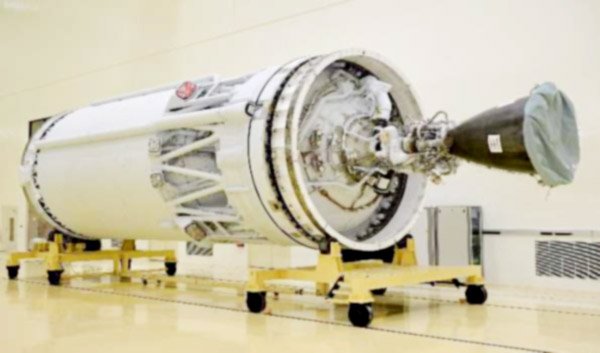Chennai, Mar 16 (UNI) The Cryogenic Upper Stage engine of ISRO’s LVM3 launch vehicle was flagged off to SHAR Range, Sriharikota, on Saturday for the upcoming launch of US satellite Blue Bird-2 that would enable individuals to make calls using smartphones from space.
In an update on Sunday, ISRO said Chairman Dr V Narayanan flagged off the Cryogenic Upper Stage (C25) of ISRO’s LVM3 launch vehicle on March 15, 2025, from the ISRO Propulsion Complex (IPRC),
Mahendragiri in Tamil Nadu, to the launch complex at Sriharikota.
Directors of ISRO Propulsion Complex (IPRC), Liquid Propulsion System Centre (LPSC), and Satish Dhawan Space Centre (SDSC SHAR) also participated in the flag off ceremony.
This stage has been integrated at IPRC and is earmarked for the fifth operational mission of LVM3 (LVM3-M5) under a commercial agreement between NSIL and AST and Science, LLC to launch their BlueBird Block-2 satellite.
The stage was designed and developed by Liquid Propulsion Systems Centre (LPSC) during the development of the LVM3 launch vehicle and the stage is powered by the indigenous high thrust Cryogenic Engine (CE20) with a propellant loading of 28.5 tonnes.
In a first, ISRO will launch the advanced American communications satellite, ‘Bluebird’ scheduled later this month from SHAR Range.
According to ISRO, this satellite will be launched using the LVM-3, popularly known as the “Bahubali” rocket.
This will mark the first instance of an Indian rocket launching a large-scale US satellite, setting a new milestone in ISRO’s expanding global commercial outreach.
The Bluebird satellite boasts revolutionary technology that will enable individuals to make calls using smartphones from space. With an innovative antenna spanning 64 sqms and a weight of approximately 6,000 kg, the satellite will operate in Low Earth orbit, facilitating direct satellite-to-smartphone connections.
This capability will allow users to make calls and access broadband internet from space without relying on traditional ground-based towers.
It would be a commercial mission by ISRO facilitated by the New Space India Limited (NSIL), the commercial arm of ISRO.











